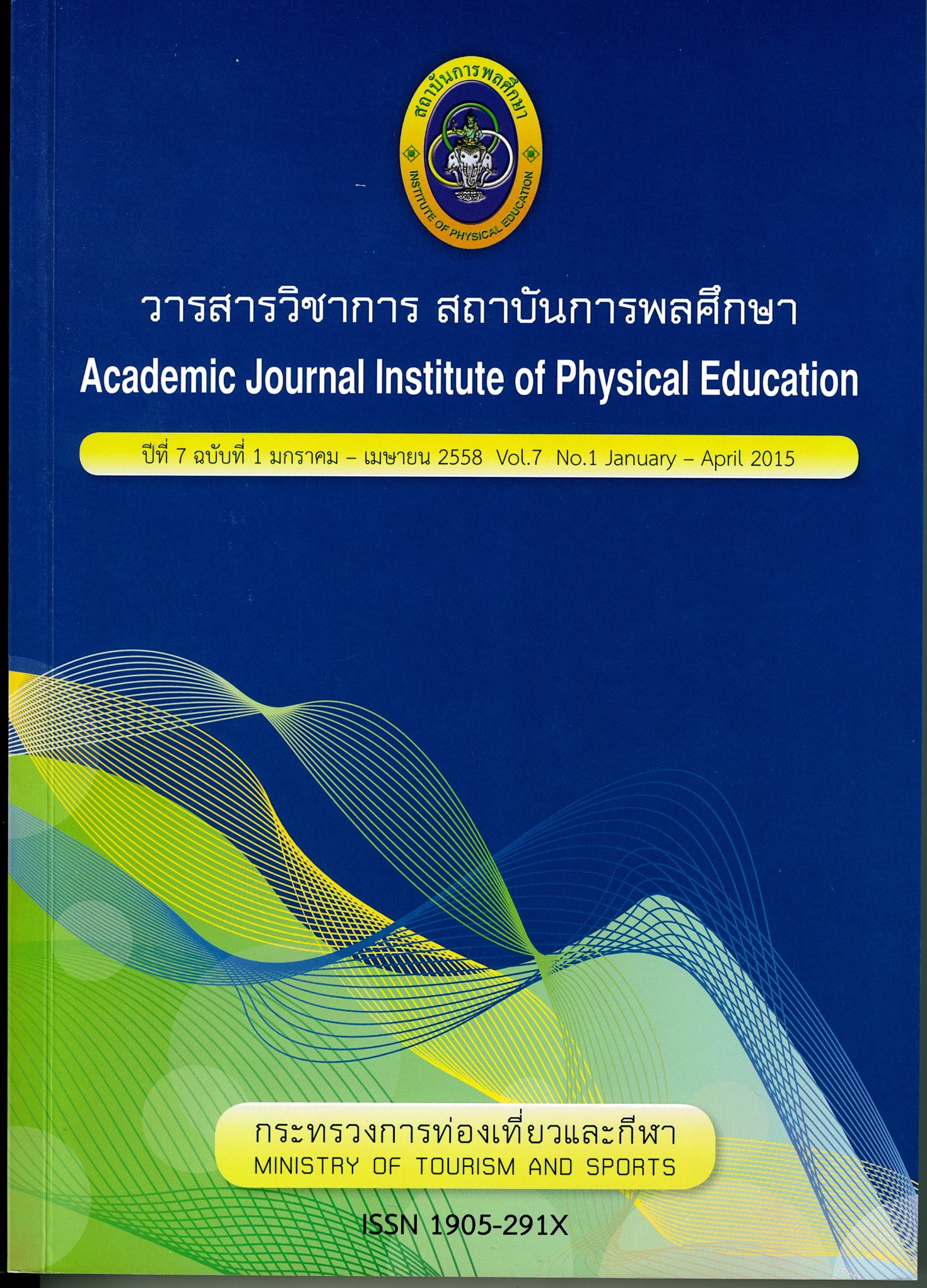A Development ICT Competency Indicator Model for Faculty Member in Institute of Physical Education – Thailand
Main Article Content
Abstract
This study aimed to develop the ICT competency indicator model for the instructors in the Physical Education Institutes in Thailand. The researcher took the information derived from the document analysis and the related literature to seek the competency lists in the information technology and communication of the instructors, and those competency lists were proved for the appropriateness and essence from the experts by using the Delphi-technique enabling to construct the ICT competency indicator model and communication accepted as the essence for the instructional work performers in the Physical Education Institutes. The derived data included 32 indicators with the factors constructed from the exploratory factor analysis: EFA and 25 indicators were constructed from the confirmatory factor analysis: CFA enabling to know that every factor was empirical correct and the confirmatory factor analysis of the second order of CFA Model included 5 factors with the factor weight value at the statistical significance (P-value = 251) indicating that every factor was the ICT competency indicator model for the instructional work performers in the Physical Education Institutes. The important factors ranked from the most to the least contained: 1) the ICT teaching material (RP=. 93), 2) the electronic study (RP=.86), 3) the computer network (R2 = .79), 4) the ICT characteristics (R?=.75) and the factor of the morality (RP=.70). Every factor contained the predictive co-efficiency (R?) able to explain the ICT competency indicator model for the instructors in the Physical Education Institutes in every factor.
Article Details

This work is licensed under a Creative Commons Attribution-NonCommercial-NoDerivatives 4.0 International License.
The published article is a copyright of the Academic Journal of Thailand National Sports University. The passage appeared in each article in this academic journal is a perspective of each author which is not related to the journal. Each author is required to be responsible for all components of his/her own article. If there are any mistakes, each author must be responsible for those mistakes on his/her own.
References
ธานินทร์ ศิลป์จารุ. (2555). การวิจัยและวิเคราะห์ข้อมูลทางสถิติด้วย SPSS และ AMOS. กรุงเทพฯ : ห้างหุ้นส่วนสามัญบิสซิเนสอาร์แอนด์ดี.
พรรณี สวนเพลง. (2013). ยุทธศาสตร์เทคโนโลยีสารสนเทศ. กรุงเทพฯ : สํานักพิมพ์ซีเอ็ด.
ยุทธ ไกยวรรณ. (2556). การวิเคราะห์โมเดลสมการโครงสร้างด้วย AMOS, กรุงเทพฯ : ศูนย์หนังสือแห่งจุฬาลงกรณ์มหาวิทยาลัย.
วิโรจน์ สารรัตนะ. (2553). การวิจัยทางการบริหารการศึกษา: แนวคิดและกรณีศึกษา, ขอนแก่น: คลังนานาวิทยา.
สถาบันการพลศึกษา. (n.d.). แนะนําสถาบันการพลศึกษา, ชลบุรี: สืบค้นเมื่อ 11 กุมภาพันธ์, 2556, จาก http://www.ipe.ac.th
สํานักการประชาสัมพันธ์ต่างประเทศ. (2554), ประเทศไทยกับอาเซียน, กรุงเทพฯ Retrieved from http://www.prd.go.th/download/thai_asian.pdf
UNESCO. (n.d.). ICT Competency for teacher. UNESCO ICT Competency Framework for Teacher. Retrieved February 20. 2013. from http://www.unesco.org

